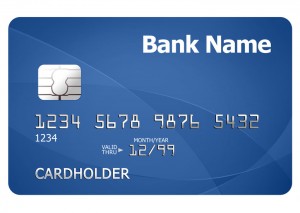EMV is here.
You may be wondering what EMV is exactly.
If you’re a merchant, you’ve probably at least heard about EMV. Some of what you’ve heard may be intended to rush you into an EMV card reader purchase, causing unnecessary panic.
The truth is a bit more complicated and involves a bit of explanation.
So let’s start at the very beginning and cover the basics of EMV and what it means for your small business.
1. Is EMV new technology?
EMV is not actually a new thing. It’s been around in Europe for a decade as an anti-fraud prevention measure.
EMV is an acronym that stands for Europay, MasterCard, and Visa, who are the big issuers of the new chip cards that require chip reader terminals.
The thought behind EMV is to cut into counterfeit card transactions.
It’s a measure to prevent ‘card present’ fraud, since the chip is incredibly secure and nearly impossible to duplicate.
Europe has seen decreases in ‘card present’ theft since implementing EMV chip and pin cards.
Many vendors in Europe were confused by American tourists not having EMV cards until recently.
2. What are chip cards?
 EMV cards are the same as previous credit and debit cards, only now in the left corner they have a small microchip that is encrypted. It’s considered safer than the traditional magnetic stripe that is swiped.
EMV cards are the same as previous credit and debit cards, only now in the left corner they have a small microchip that is encrypted. It’s considered safer than the traditional magnetic stripe that is swiped.
The new chip cards retain their magnetic strips and can be run as non-chip cards.
EMV cards also include a pin that is used as authentication, the chances of fraudsters having the chip copied are low, but having the chip and pin are nil.
3. Chip and pin vs. chip and signature
One difference between the European system of chip EMV cards and the U.S. is a “chip and signature” option that Europe does not have.
‘Chip and signature’ will still have shoppers place their chip card in the EMV reader, but rather than entering their pin, they will be prompted to sign for the transaction like the old way.
Which is puzzling.
Because it removes the extra PIN security measure that makes chip cards effective in Europe. It seems a bit silly to adapt the European method if we can’t do it properly.
The chip and signature option is largely due to a difference in how Europeans and Americans experience transactions.
Europeans at a restaurant, for example, will have a wireless card reader brought to their table to pay there and enter the PIN, rather than having the server take their card to the back and swipe it away from the cardholder.
4. Will fees on my statement increase?
Besides questions about replacing all of your equipment, you’re probably wondering if your monthly rates and fees will increase by not using EMV terminals.
They shouldn’t.
For starters, EMV doesn’t have to do with compliance charges, and therefore you won’t be penalized for not using EMV readers.
So if you get mysterious calls from people saying that you are no longer in Compliance by not having EMV machines and need to pay them, it’s not true.
Still confused? Read about EMV on our blog. You may also want to take a look at our retail technology services.
Want to talk to someone directly?
If you’d like to learn more about what steps to take with your own business, or would like a free EMV and credit card processing consultation, contact us here.






